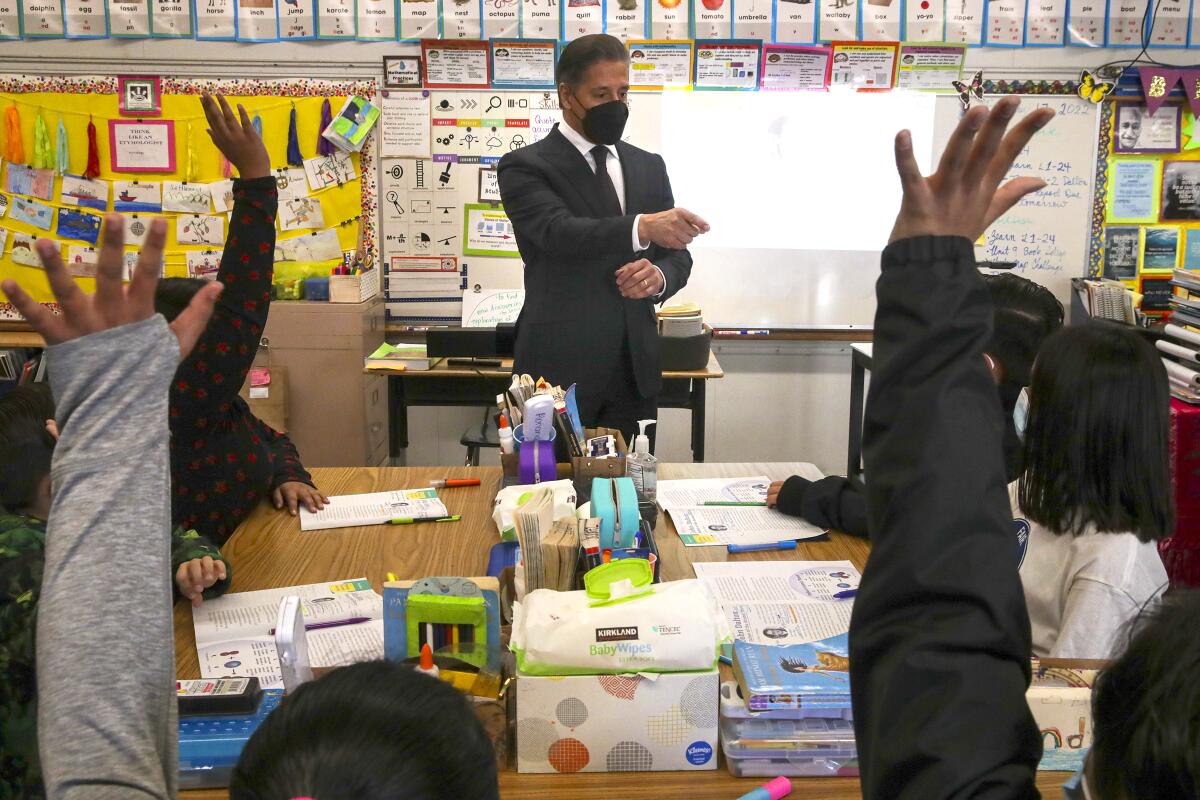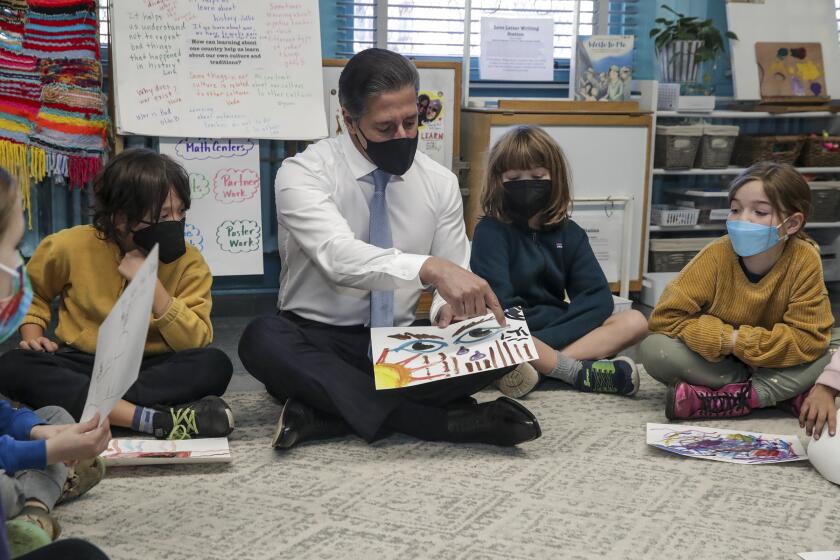Editorial: LAUSDâs efforts to address learning loss should inspire hope, not chaos and frustration

The Los Angeles Unified School District has had months to fine-tune its âAcceleration Daysâ initiative to help students make up some of the academic progress lost during the pandemic school shutdowns. Yet no one knows how many students and teachers are going to show up when the program starts in five weeks. Not parents, not teachers and not school staff. And, except for top LAUSD administrators, few seem to know whatâs supposed to happen during those two days.
Such a disorganized beginning to a $122-million program is dismaying. An initiative that requires collaboration with parents and teachers shouldnât be shrouded in mystery so close to its Dec. 19 start.
The program adds extra days of schooling, two during winter break and two during spring break. LAUSD is surveying parents and teachers to determine who will participate, but the results havenât been tabulated. District administrators say theyâre confident they have enough time to roll out the program as promised.
The extra days of instruction are intended to help struggling students and provide âenrichment activitiesâ to others. But though parents have recently received a barrage of texts, emails, and phone calls from the district urging them to sign up, they have been given little information about what the program entails. None of the communiques contain specific information that parents need to decide whether to send their children to the program, parents say.
The latest national proficiency test scores offer a desolate picture of studentsâ academic achievement, showing that we need immediate action to fix the learning loss. But there are pockets of hope, among them reading scores for LAUSD eighth-graders.
What will students do during the two extra days tacked onto the start of the winter break in December? Will they get to work with their own teachers in their own schools? Have some kids been identified as needing extra instruction? What are the planned enrichment activities? Will studentsâ work during those days count toward their grades?
Frustrated parents say answers arenât forthcoming from the schools, which also seem to have limited information. A district webpage provides some details, but these may not be enough for some parents to make decisions soon about how best to juggle work, holiday plans and kidsâ vacation during winter break. Many parents say they have already decided to opt out.
Failure to communicate properly with parents and teachers is a costly mistake that LAUSD can hardly afford. Students desperately need help to address substantial learning loss revealed by dismal test scores recently released by national and state officials. District officials have pandemic funds that they are using to pay for the four extra days, in addition to three days of teacher training.
District administrators vow to do a better job of communicating details to parents from now on, but valuable time has been lost. This isnât the first time that the district has tried to move ahead on this initiative without consulting key parties. Supt. Alberto Carvalho promised a âyear of accelerationâ at the beginning of the school year, with plans to set voluntary learning days throughout the school year. However, a plan to extend the school year by four days ran into trouble because, as the teachersâ union rightly said, it first should have been discussed during labor negotiations. United Teachers Los Angeles then threatened to boycott the first voluntary learning day on Oct. 19, before LAUSD canceled that plan.
The failure by UC to reach an agreement with nearly 50,000 academic workers on pay increases and other benefits tarnishes a higher education system long seen as the best in the country.
LAUSD should have consulted with the teachersâ union and parents from the start before launching such as wide-scale program. Itâs the second-largest district in the country, with about 422,000 students in more than 1,000 schools, and addressing learning loss is a monumental task that requires consistent collaboration with students, parents and teachers.
For the record:
6:46 p.m. Nov. 14, 2022An earlier version of this article incorrectly referred to GPSN as Great Public Schools Now. The nonprofit organization changed its name earlier this year.
Unfortunately, UTLA hasnât bought into the acceleration days initiative, calling the program a waste of time and money. Instead, union officials point to their own âBeyond Recovery Platform,â which they say is the result of meetings with thousands of parents and their membership. UTLAâs plan takes a long-term approach by addressing a broad range of issues, including higher teacher pay, upgraded technology for students and increased healthy food options for students. Education advocacy groups like Great Public Schools Now would like to see LAUSD dig into assessment data to craft more focused learning opportunities for students who most need it. Carvalho has said there are other efforts to help address learning gaps, such as tutoring.
There are many sound ideas to address studentsâ achievement declines. But none of them will make a difference without good preparation.
More to Read
A cure for the common opinion
Get thought-provoking perspectives with our weekly newsletter.
You may occasionally receive promotional content from the Los Angeles Times.












